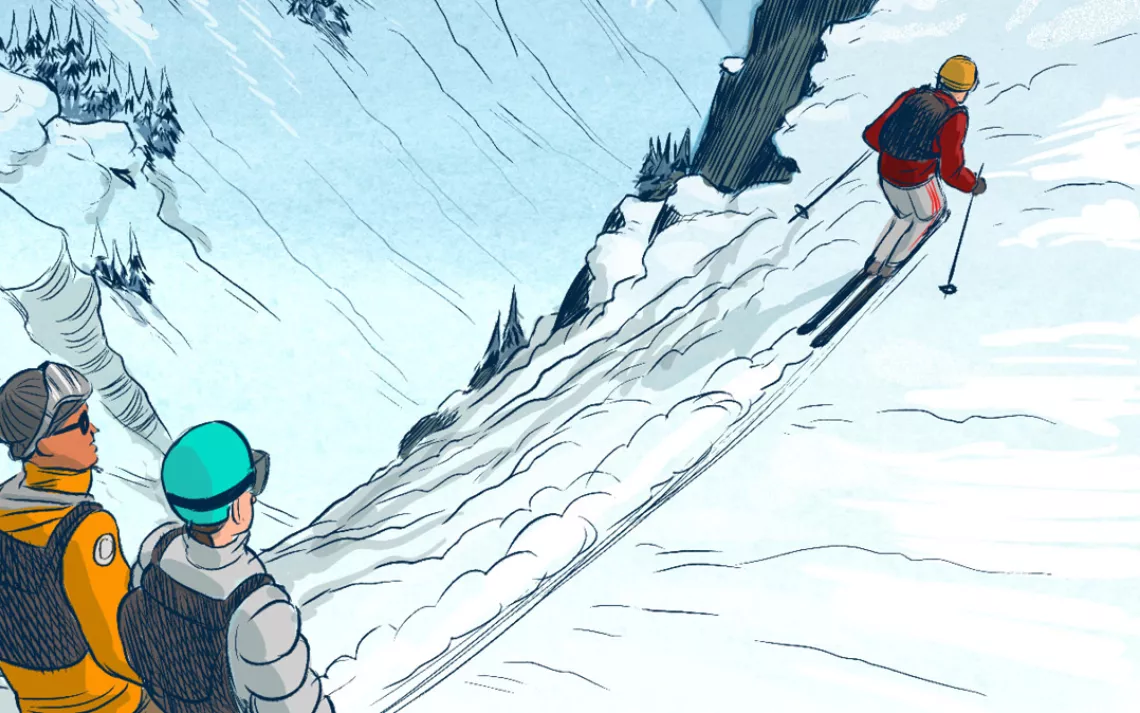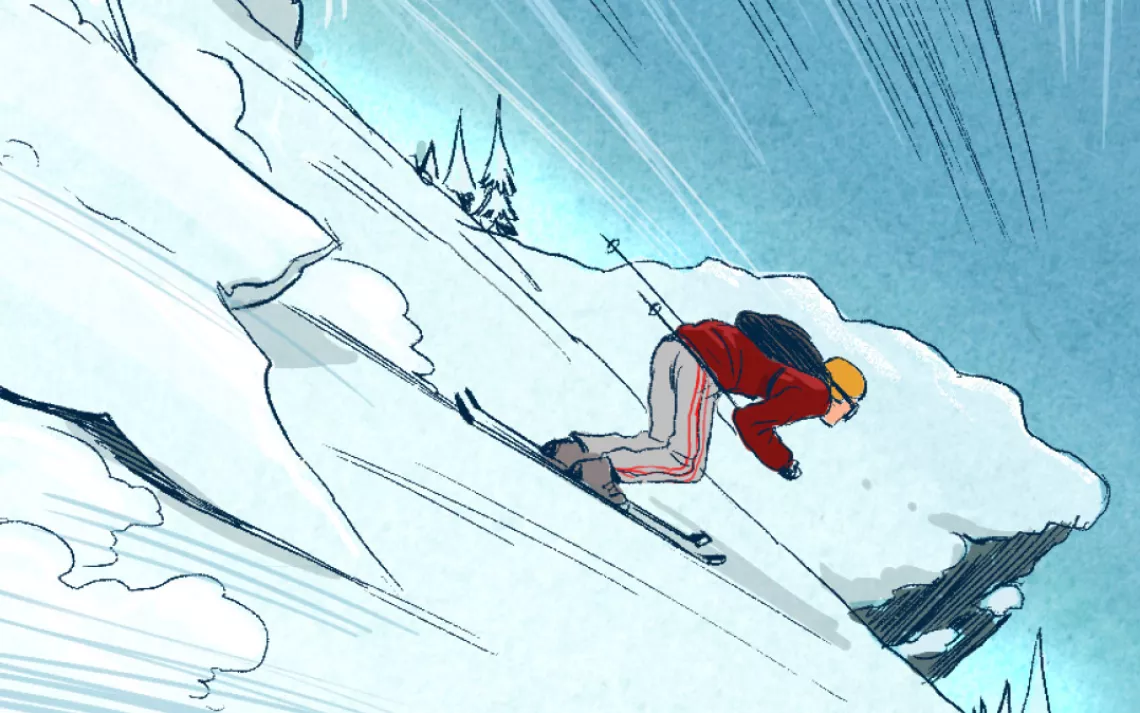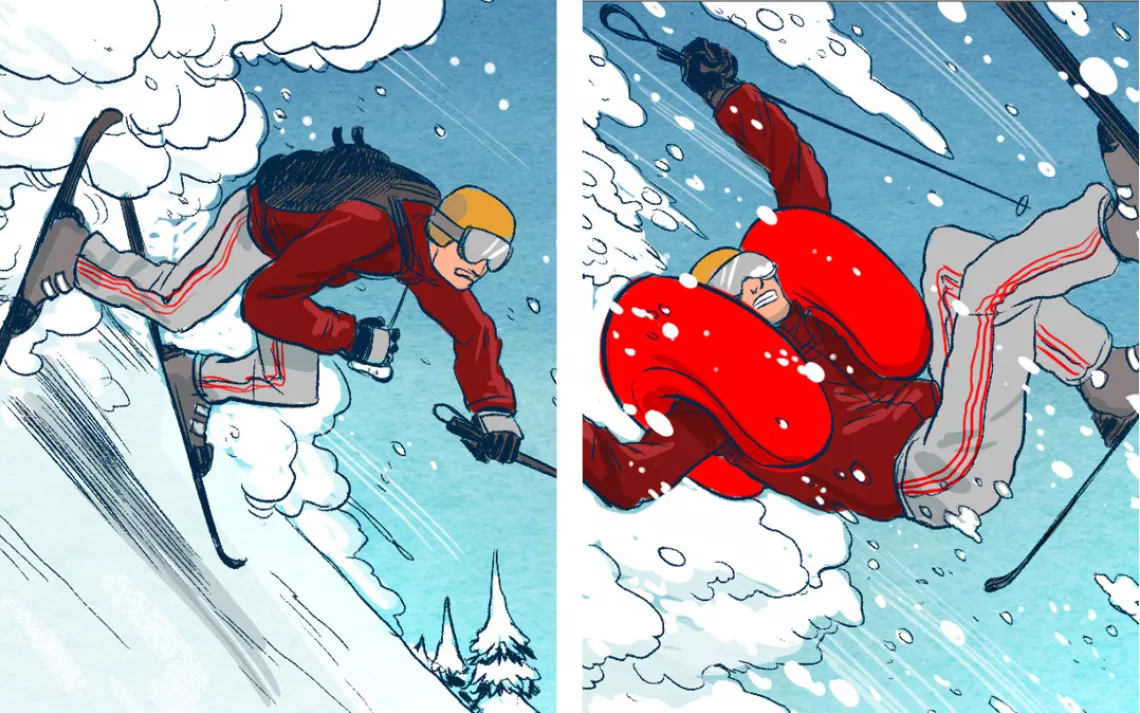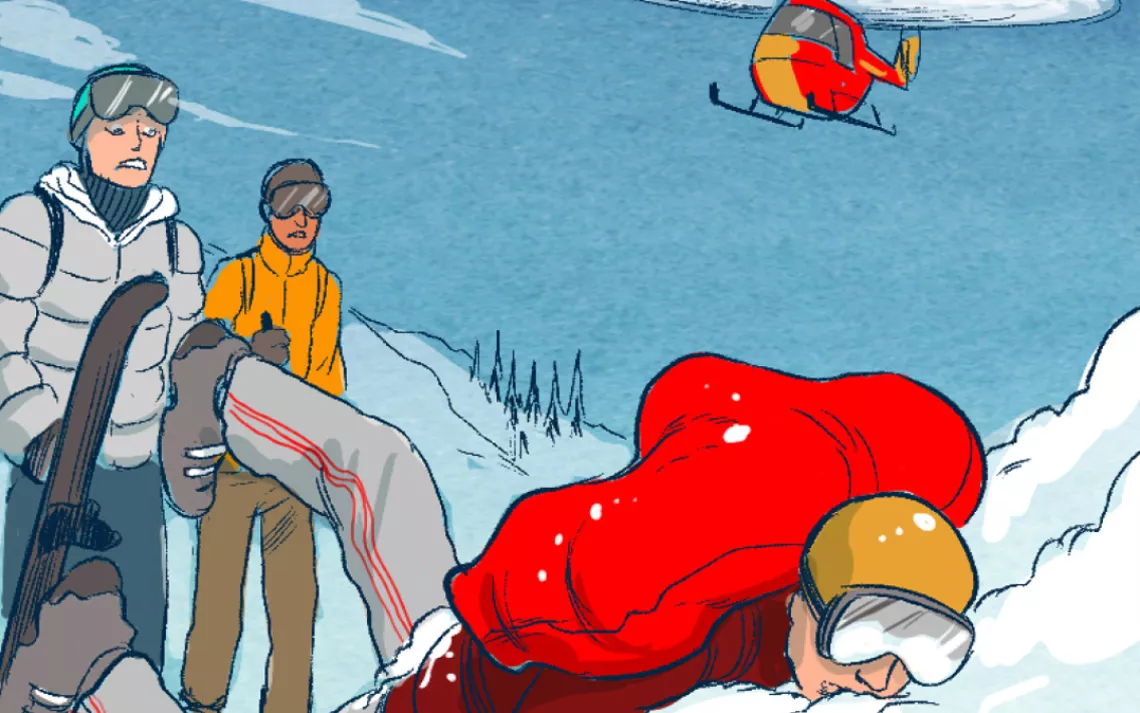When I landed, my ski hit a tree -- That's when I broke my leg and my pelvis. At least I was on top of the snow, thanks to my airbag. Three hours later I was on a heli to the hospital. I hope to be skiing again by next winter.
ASK THE EXPERT
Doug Chabot is the director of the Gallatin National Forest Avalanche Center.
"Avalanches are not random: 90 percent are triggered by the victim or someone in the victim's party. They're most frequent during and immediately after a big storm. The skiers here were experts who gathered information that pointed to stable snow. But sometimes even experts get it wrong, which is why everyone should carry safety gear. An airbag keeps you near the surface, where you can quickly be found. If you're fully buried, an avalanche beacon signals your location. In this case, the airbag--and a little luck--saved Epstein's life."
 The Magazine of The Sierra Club
The Magazine of The Sierra Club







